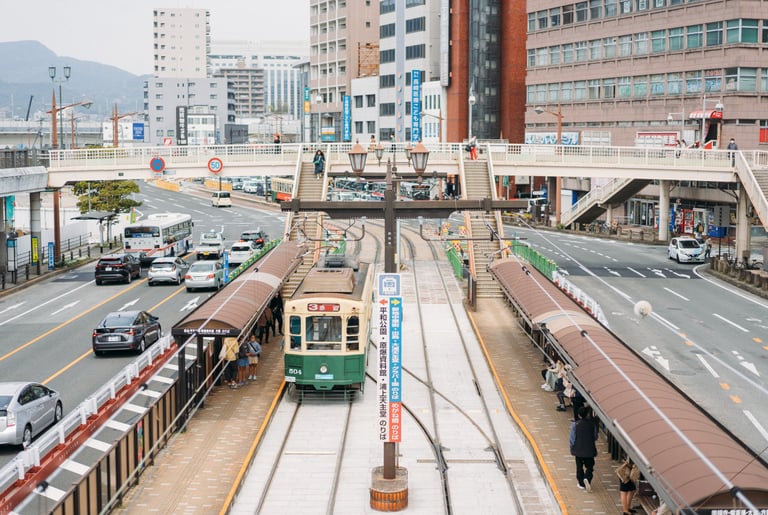The Nagasaki Tram — A Living Symbol of the City’s History
11/9/20252 min read


When you visit Nagasaki, one of the first things you’ll notice is the colorful trams gliding through the city. Locally known as the “Chin-Chin Densha” for the sound of its bell, the tram is an essential part of daily life and an iconic way for visitors to explore the city. This article introduces the history, routes, fares, and some interesting stories behind the Nagasaki Electric Tramway.
One of Japan’s Oldest Streetcars
The Nagasaki tram began operation in 1915, making it the third oldest streetcar system in Japan, after Kyoto (1895) and Tokyo (1903). It was established as Nagasaki Electric Tramway Co., Ltd., starting with only a few short routes. Over the years, the network expanded to connect nearly all of Nagasaki’s key areas and attractions.
During World War II, much of the system was destroyed by the atomic bombing in 1945. However, remarkably, service resumed on part of the line just three days later. The tram became a symbol of recovery and hope for the citizens of Nagasaki.
Routes and Fares Today
There are currently five tram lines operating in Nagasaki:
Akasako – Sofukuji
Akasako – Hotarujaya
Hotarujaya – Sofukuji
Hotarujaya – Shinchi Chinatown – Ishibashi
Akasako – Shinchi Chinatown – Ishibashi
The tram connects nearly all major tourist destinations, including the Peace Park, Atomic Bomb Museum, Megane Bridge, Dejima, Oura Church, and Glover Garden.
The fare system is simple: a flat rate of 150 yen for adults and 80 yen for children, regardless of distance. Since 2023, the system has also accepted IC cards like Suica and PASMO, making it even more convenient for visitors.
Small Details That Make It Special
What makes the Nagasaki tram unique is not only its history and convenience but also its character and charm.
Colorful designs: Each tram has its own look, with colorful advertisements and event-themed designs.
Historic vehicles: Some trams from the 1950s are still in active service today.
Friendly drivers: Known for their warm announcements and occasional sightseeing tips, the drivers add a human touch that travelers appreciate.
Why Nagasaki’s Tram Is So Loved
Nagasaki is famous for its many hills, but the main sightseeing areas are all located along the tram lines. This makes it easy for both locals and tourists to move around without needing a car.
Environmentally friendly and efficient, the tram also helps reduce traffic congestion. In the evening, the sight of trams gliding through the illuminated streets creates a nostalgic and distinctly Nagasaki-like atmosphere.
Conclusion
The Nagasaki tram is more than just a means of transportation — it’s a moving piece of history that reflects the resilience and spirit of the city. Over a century after its debut, it continues to be cherished by residents and visitors alike.
When you visit Nagasaki, be sure to take a ride on this charming “Chin-Chin Densha.” As you watch the city pass by through its windows, you’ll experience the timeless rhythm and quiet beauty that define Nagasaki.
